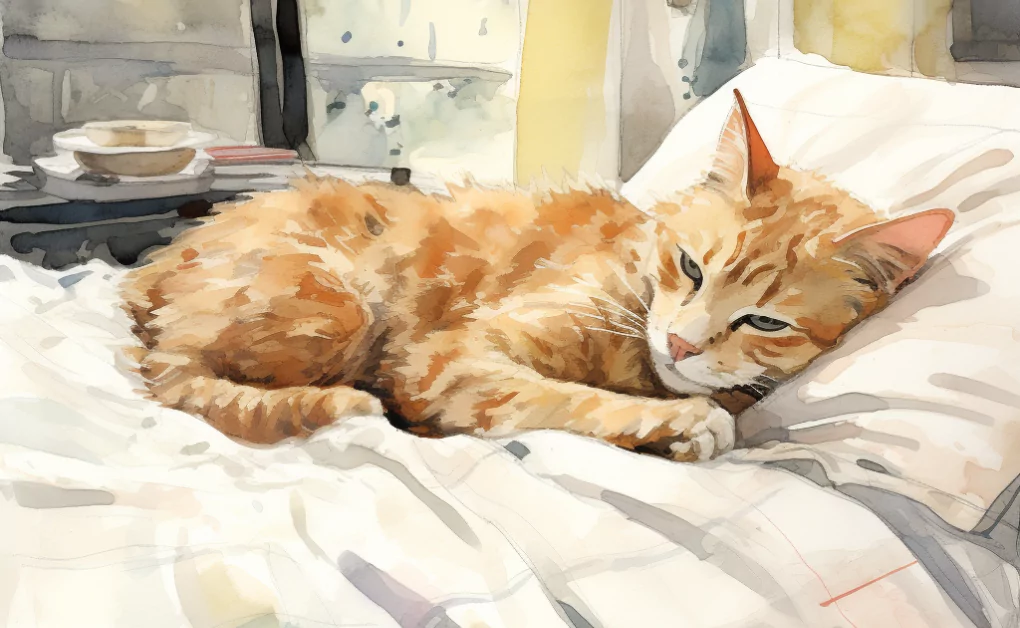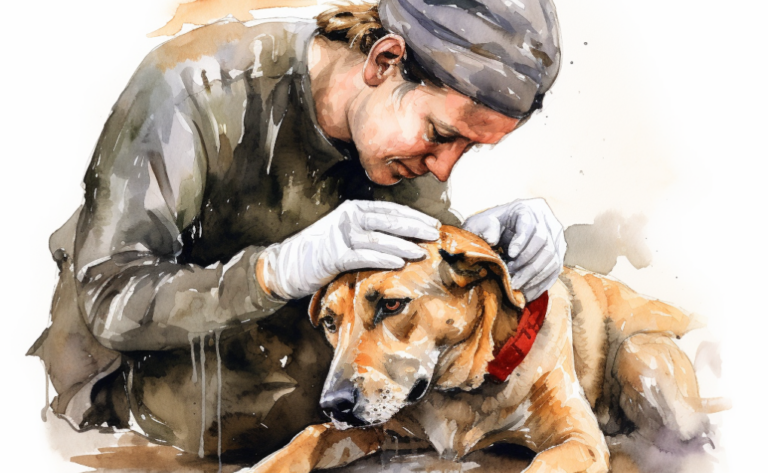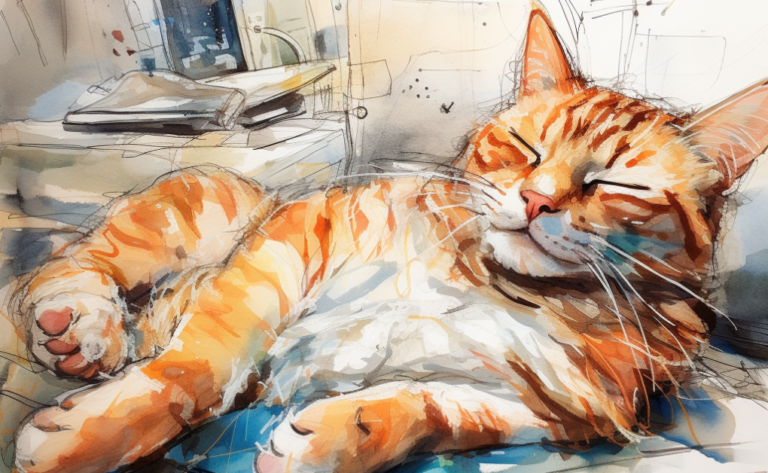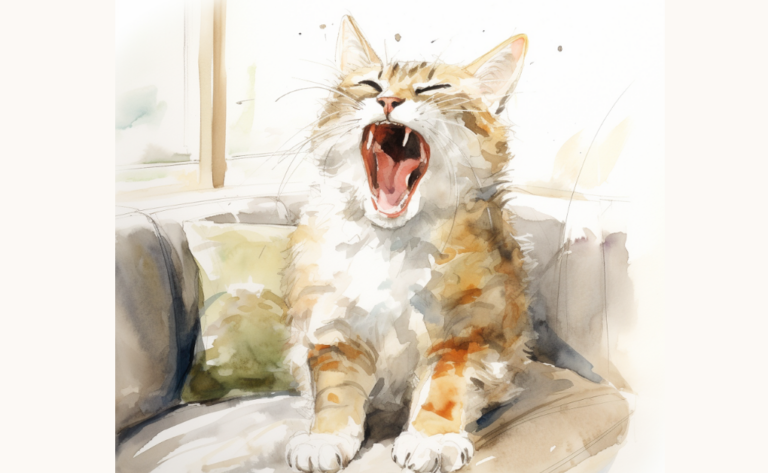What is an Infectious Disease in Cats?
What is it?
How is it Treated?
Breed Predispositions
Infectious diseases can affect any cat breed and cats of any age or gender.
Introduction
When Emily noticed her once-playful Persian cat, Misty, had become lethargic and lost her appetite, she knew something was amiss. Concerned for her feline friend’s well-being, Emily scheduled a visit to her veterinarian for a comprehensive examination. After conducting several tests, the veterinarian informed Emily that Misty was suffering from an infectious disease, a common yet serious health concern for many cats.
Infectious diseases in cats is any ailment caused by microorganisms such as bacteria, viruses, fungi, and protozoa, including ringworm infections or common internal parasites in cats. The word “infection” refers to the invasion of one organism by another, with the latter becoming a host. An infection can be acute, short-lived, or chronic, indicating a stable condition. Some infections manifest symptoms immediately, while others remain latent, not producing visible signs until the disease has progressed to its later stages.
In small animal and cat health, these diseases can affect various body parts, including the upper respiratory tract. It’s essential to note that sometimes, cats – whether they’re kittens or mature felines – may be carriers of these diseases without showing apparent symptoms. Sometimes, a fungal culture might be necessary to diagnose certain conditions accurately.
There are several types of feline infectious diseases. Here are the common ones:
Feline Leukemia Virus
Feline leukemia virus (FeLV) is a retrovirus that causes cancer in domestic cats. FeLV infects cells of the immune system, causing them to become malignant. The disease progresses slowly over several years, often resulting in death within five years after infection.
FeLV is spread through saliva and urine. The virus is most common among young kittens and adult cats who live together. Cats infected with FeLV usually show no symptoms until the later stages of the disease.
There are two types of Feline Leukemia Virus (FeLV):
- The FeLV-A virus causes leukemia in cats and is usually spread through saliva.
- The FeLV-B virus causes lymphoma in cats and is usually transmitted via blood transfusions.
Both viruses cause serious health problems in cats. However, there is no cure for either type of FeLV.
Symptoms
Symptoms include loss of appetite, weight loss, vomiting, diarrhea, fever, weakness, depression, lack of coordination, and difficulty breathing. Cats may develop tumors, enlarged lymph nodes, bleeding disorders, and kidney failure in advanced cases.
Treatment
Treatments for FeLV include chemotherapy, radiation therapy, surgery, and supportive care; however, the most effective treatment is prevention through vaccination.
Vaccination against FeLV is available at veterinary clinics. Vaccine manufacturers recommend annual booster shots. However, some veterinarians believe that yearly boosters may be optional.
Feline Immunodeficiency Virus (FIV)
Feline immunodeficiency virus (FIV) is a retrovirus that causes feline AIDS. The disease is similar to human-acquired immune deficiency syndrome (AIDS). According to the American Association of Felines Practitioners, approximately 1 million cats live with FIV worldwide. About 10% of these cats develop full-blown FIV infections.
Cats have two types of Feline Immune Deficiency Virus (FIV): Type 1 and Type 2.
- Type 1 FIV is transmitted through bite wounds and blood transfusions; however, most cases occur when kittens receive vaccines against FeLV at birth. This type of infection usually goes away within a couple of years.
- Type 2 FIV is spread through saliva and vaginal fluids. Most cats who contract this virus become sick within three months after exposure. Some cats never develop symptoms, but others may experience weight loss, fever, depression, diarrhea, vomiting, and lymph node enlargement.
Although cats cannot contract HIV, they can be infected with FIV. This means that some cats may develop symptoms of AIDS after being exposed to the virus.
Symptoms
Although most cats infected with FIV remain healthy, some may eventually become ill. Cats contracting FIV often experience weight loss, fever, diarrhea, vomiting, coughing, depression, lethargy, and sometimes neurological problems. Some cats with FIV die within two years of contracting the virus.
Treatment
There are two types of treatment options available for FIV:
- Antiviral drugs
Antiviral drugs work by inhibiting viral replication. They’re usually administered orally, once daily.
- Interferon therapy
Interferon therapy works by stimulating the immune system to fight off the infection. It’s given intravenously, three times per week.
Because FIV is spread through bites and saliva, keeping your cat away from other anima is essential. Also, FIV is contagious; you should avoid sharing food, water bowls, litter boxes, grooming tools, bedding, toys, and clothing with your cat.
Feline Calicivirus (FCV)
FCV is a contagious disease that causes severe diarrhea in kittens and adult cats. FCV is spread through direct contact with infected feces. The virus may be transmitted via contaminated food or water bowls, bedding, toys, litter boxes, grooming supplies, flea collars, and cat carriers.
FCV is most commonly seen in young kittens, but older cats can be affected too. Although, young kittens are at the highest risk because their immune systems aren’t fully developed. As a result, older cats may not show any signs of disease until after exposure to the virus.
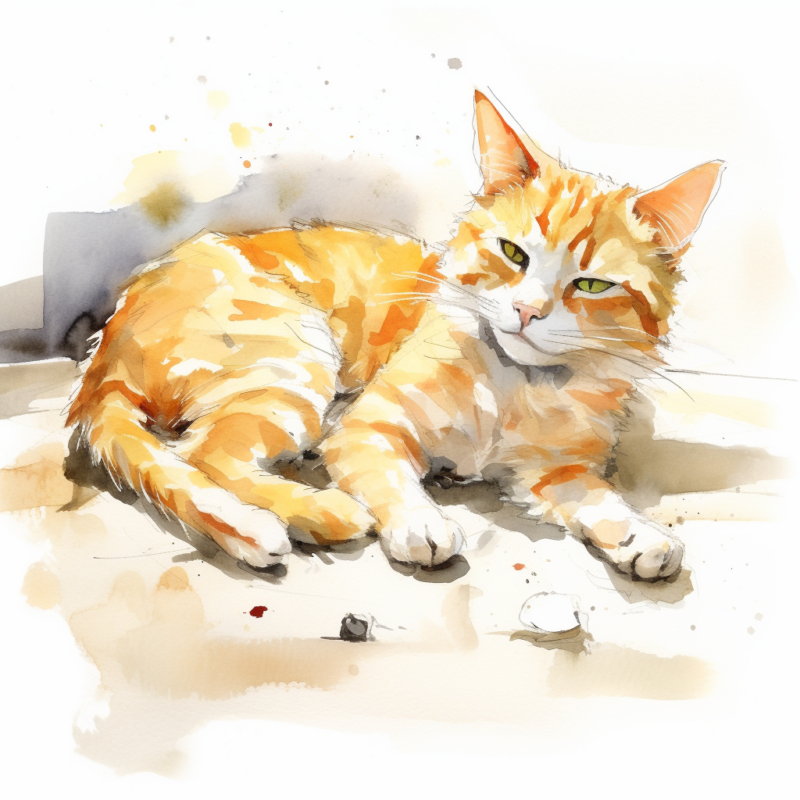
Cats can be carriers of FCV and shed the virus in their feces for several weeks after recovery. Therefore, cats sharing a household with another cat should be tested for FCV at least once every three months.
Symptoms
Most cats infected with FCV show no signs of illness. However, some cats develop mild diarrhea, vomiting, fever, lethargy, and loss of appetite. These symptoms usually last only a day or two. However, some cats may become very ill and die within 24 hours after exposure to FCV.
Symptoms typically appear around two weeks. The most common symptom is diarrhea, followed by vomiting and fever. Other symptoms include depression, weight loss, lack of energy, and dehydration.
Treatment
Treatment options for your cat who tests positive for FCV include supportive care and medications. Supportive care includes fluids, electrolytes, pain relief, and antibiotics. Medicines that treat FCV include antiviral drugs, such as feline amantadine hydrochloride tablets, and immunosuppressants, such as prednisone.
FCV is treatable with antibiotics. However, some cats who recover from FCV develop long-term health problems, including kidney failure. So be careful when treating your pet.
Your vet may recommend a combination of treatments to help reduce the severity of the disease. Your vet may also suggest vaccinating cats at risk of contracting FCV.
These vaccines are safe and effective. They contain live viruses that stimulate immunity in your cat. This enables the production of antibodies that fight off future infections.
FCV vaccines work best when administered within ten days of exposure to the virus. After that, the vaccine loses its effectiveness. To ensure maximum protection, ask your vet to give two vaccine doses two weeks apart.
Feline Infectious Peritonitis (FIP)
FIP, known as feline distemper, is a fatal disease in cats. This is associated with a viral infection, feline coronavirus infection. The virus causes inflammation of the body’s organs, especially the liver, spleen, lungs, kidneys, intestines, heart, brain, eyes, and skin. FIP is spread through direct contact between infected and healthy cats.
This condition affects older cats and is often fatal. It usually occurs after an infection has been present for a prolonged period.
Symptoms
Some clinical signs include high fevers, depression, loss of appetite, nausea, diarrhea, and abdominal pains. Unfortunately, there is no known way to treat this deadly disease. However, there are several treatments available to help alleviate symptoms.
Treatment
Treatments available to help reduce the severity of the disease include antibiotics, anti-inflammatory drugs, nutritional supplements, and dietary modifications. It also involves removing affected organs and replacing them with healthy tissue. If left untreated, the cat may die within days.
Contact your veterinarian immediately if you suspect your cat is suffering from FIP. Your vet should perform blood tests to determine whether your cat has FIP. If your cat tests positive for FIP, it must be treated with antiviral medications and supportive care.
Cat Scratch Disease (CSD)
Cat scratch disease (CSD), also known as cat scratch fever, is a bacterial infection spread through direct contact between cats’ claws and human skin. The bacteria usually infect humans who come into close contact with infected cats. This is caused by bacteria called Bartonella henselae. Cats scratch themselves to remove dead skin cells allowing the bacteria to enter the bloodstream.
Symptoms
Although CSD is not contagious, it can be painful and uncomfortable. Clinical signs include fever, headache, rash, swollen lymph nodes, fatigue, muscle aches, and joint pain. Most cases resolve within two weeks after symptoms appear.
Treatment
Treatment options for Cat Scratch Disease include antibiotics, steroids, and surgery. The most common treatment is antibiotics.
- Antibiotics work well when the infection is localized. However, antibiotics may not be effective if the disease spreads throughout the body.
- Steroids are usually used to treat CSD in kittens. Steroid injections are given directly into the affected area. This helps reduce swelling and inflammation.
- Surgery is rarely needed. Surgery involves removing infected tissue and draining fluid pockets.
Feline Herpesvirus (FHV1)
Feline herpesvirus (FHV) is a virus that causes feline infectious rhinotracheitis, a highly contagious upper respiratory disease that affects cats worldwide. The virus is spread through direct contact between infected animals and through contaminated environments.
FHV is most commonly seen in young kittens, especially those born during warmer months. However, older cats may be susceptible to infection. Infected cats usually recover within two weeks, although some develop chronic conditions that may last several years.
Cats infected with FHV1 shed viruses in their saliva, urine, feces, and nasal discharge. The virus can be transmitted directly with these fluids or indirectly via fomites (objects that carry infectious material).
Symptoms
The first sign of a flu-like virus (FHV1) is usually watery eyes and sneezing. Other symptoms include runniness, coughs, lethargy, nausea, vomiting, diarrhea, and weight loss. These symptoms typically appear after two weeks and may continue for up to one month.
Treatment
Treatment options include antiviral medications, topical creams, and laser therapy. Antivirals work by inhibiting viral replication, preventing further infection, and reducing symptoms. Topical creams contain antihistamines and steroids that reduce itching and inflammation. Laser therapy uses light energy to destroy infected cells.
Prevention involves keeping cats away from sick cats, washing hands frequently, and cleaning surfaces where cats sleep and play.
Leptospirosis
Leptospirosis is a bacterial disease found worldwide that affects animals and humans alike. The bacteria live in water and soil and can be transmitted with infected animal urine or feces.
Cats are particularly susceptible to leptospirosis because they often drink contaminated water and lick themselves clean after defecating. They’re also prone to developing kidney problems when exposed to the bacteria.
This bacterial infection is transmitted via contact with contaminated water or soil. Leptospira bacteria infect the kidneys, liver, and spleen.
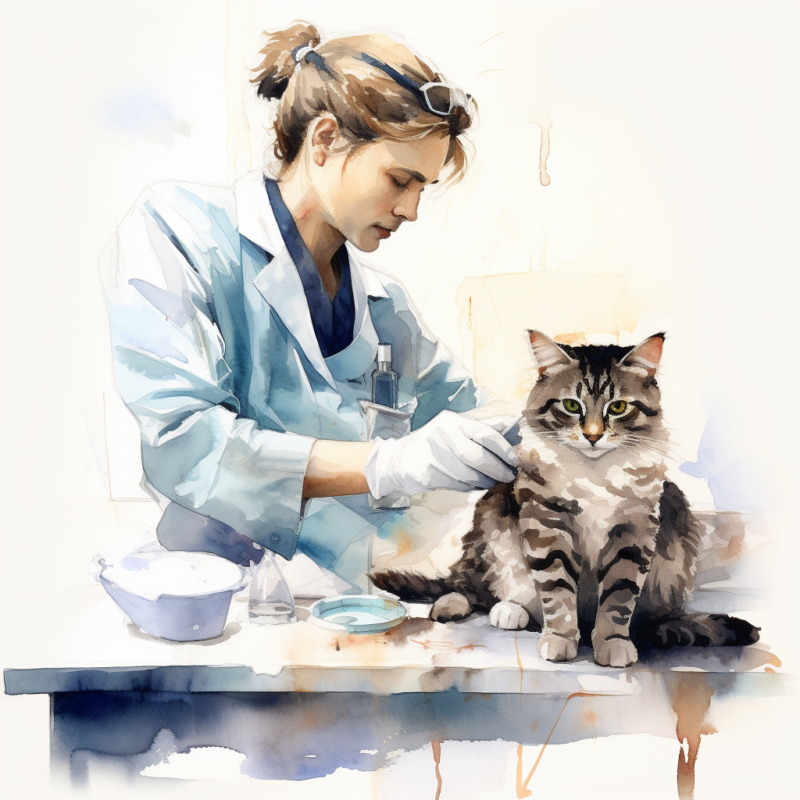
Symptoms
Some common clinical signs of leptospirosis are fever, headache, muscle aches, vomiting, diarrhea, and jaundice. However, these symptoms may only appear several days after exposure. This means that early detection is critical.
Treatment
There are several effective treatments available. Your veterinarian should prescribe antibiotics based on your cat’s symptoms and medical history.
Some veterinarians recommend administering antibiotics intravenously (IV) rather than orally. This approach may reduce the risk of antibiotic resistance developing.
If your cat develops kidney failure, it must receive dialysis treatment. Dialysis removes toxins from the blood and restores fluid balance. Unfortunately, dialysis is expensive and requires frequent hospital visits. To save money, some owners administer IV fluids at home. However, this method isn’t recommended because it needs to remove more toxins.
Giardiasis
Giardia is a parasite that infects humans and animals. Cats are especially susceptible to giardiasis because they lack immunity against this parasite. This parasitic infection is commonly found in kittens and young cats. Giardia attaches itself to the small intestine lining, causing irritation and inflammation.
Cats can become infected by drinking dirty water or eating feces-contaminated foods. They may also be exposed to contaminated water playing in puddles or swimming pools.
Symptoms
Cats infected with Giardia often show symptoms similar to human cases, including diarrhea, weight loss, vomiting, and dehydration. Loose stool is the most common symptom in dogs, although some dogs may not exhibit any signs.
Treatment
Treatment involves administering a medication called metronidazole (Flagyl). This drug kills Giardia parasites and prevents them from reproducing. Metronidazole should be administered orally at 10mg/dose twice daily for seven days. If left untreated, giardiasis can lead to death.
Prevention
To prevent giardiasis, keep your cat away from sources of contamination, including areas where animals defecate. Clean litter boxes regularly and change them out frequently. Also, clean your cat’s food dishes daily and wash your hands after handling your pet.
Rabies Virus
Rabies is a deadly disease caused by a virus that attacks the central nervous system, including the brain and spinal cord. In cats, it is typically transmitted through the bite of an infected animal, often a wild animal such as a raccoon, skunk, bat, or fox.
Symptoms
The rabies virus travels from the wound to the brain, where it causes swelling or inflammation. This inflammation leads to symptoms of the disease, which include changes in behavior (such as aggression or unusual friendliness), difficulty swallowing, restlessness, fever, and sensitivity to touch or light. As the disease progresses, it can cause seizures, paralysis, and death.
Once symptoms appear, rabies is almost always fatal. Therefore, prevention through vaccination is incredibly important. Rabies is also a zoonotic disease, which can be transmitted from animals to humans, posing a public health risk.
Treatment
Although there is no cure for rabies, vaccination is available. Vaccination is safe and effective, and there’s no risk of side effects. However, it takes at least two vaccine doses to protect against this disease fully. Vaccination also doesn’t protect pets from contracting rabies from other animals.
Your cat must receive postexposure prophylaxis (PEP) if it tests for rabies. PEP consists of five doses of rabies vaccine administered at intervals of no longer than 28 days. After receiving PEP, your cat should be monitored closely for signs of illness.
If your cat shows no signs of illness within 30 days, it can be released from quarantine. However, if your cat shows clinical signs of disease, it must remain quarantined until fully recovered.
Your cat cannot transmit rabies to another animal. However, if your pet bites another animal, the second animal may develop rabies. This is known as a “zoonotic” transmission.
To prevent zoonotic transmissions, keep your pets away from wild animals. Also, avoid letting your dog roam outdoors because dogs can easily pick up stray animals.
Treatment Options for Infectious Disease in Cats
Treating infectious diseases in cats involves a multi-pronged approach to ensure the best possible outcome for your pet:
Antibiotics or Antifungals
These medications are administered with the intent of killing bacteria or fungi that are present in the cat’s body. They are often employed in the early stages of infection, where they can be most effective. An antibiotic like penicillin or cephalosporin might be chosen for bacterial skin infections, one of the most common infections in cats. Alternatively, antifungal medication like itraconazole could be used for ringworm. This fungal infection is highly contagious and transmitted from cat to cat.
Antiparasitic Medications
These are designed to kill the parasites plaguing your cat. The specific medication used will be dependent on the parasite in question. For instance, praziquantel could treat tapeworms, while imidacloprid can combat fleas. Heartworm disease, although less common in cats than dogs, can make the cat susceptible to secondary infections and requires careful treatment.
Antiviral Medications
While fewer antiviral medications are available in cats, some are for diseases like FeLV and FIP infection. One such medication is interferon, a drug that boosts the cat’s immune system, which can be very effective in the early stages of infection. Another antiviral medication, famciclovir, is effective for managing feline viral rhinotracheitis, a type of upper respiratory disease in cats.
Supportive Care
This involves maintaining hydration, nutrition, and comfort levels for your cat as its body fights off the infection. Such supportive care is particularly important for a domestic cat that has contracted a disease from a wild animal, for example, or an outdoor cat that has picked up an infection.
Vaccinations
A critical part of disease control, vaccinations expose the cat’s immune system to a harmless form of the disease-causing organism, priming it to respond quickly and effectively if the actual disease is encountered. Vaccines can prevent many diseases affecting cats, including feline leukemia virus, a highly contagious disease particularly common among outdoor cats.
Isolation
In the case of a highly contagious disease, isolation can be a crucial step in preventing your cat from infecting others. This could involve keeping the cat in a separate room at home or even a specialized isolation ward if the cat is hospitalized.
Every cat’s situation is unique and should be assessed by a feline practitioner or veterinarian to determine the most appropriate treatment. Early detection and treatment are the best way to maintain your healthy cat and protect public health.
How to Prevent Your Cat From Getting Infectious Diseases?
- Vaccination: To maintain the animal welfare of your pet and prevent infections, ensure that your domestic cat’s vaccinations are current. Many vaccines are available for infectious diseases like Feline Panleukopenia (FPV), Feline Calicivirus (FCV), Feline Herpesvirus type I (FHV-1), Rabies, Feline Leukemia (FeLV), and more. Your veterinarian should guide you on the most suitable vaccination schedule based on your cat’s lifestyle, age, and overall health.
- Regular Vet Check-ups: Consistent veterinary check-ups are essential for the early detection and treatment of infectious diseases, contributing to keeping your cat healthy. During these visits, veterinarians can conduct comprehensive physical examinations and perform necessary diagnostic tests to detect potential health issues.
- Indoor Lifestyle: Having an indoor cat reduces exposure to infected animals and certain diseases, especially those transmitted through close contact or fighting, such as FIV or FeLV.
- Clean Environment: Practicing good hygiene and ensuring a clean living environment can prevent the spreading infectious diseases. Regular disinfection of your cat’s living area, including food and water dishes, litter boxes, and toys, is essential.
- Parasite Control: Consistent use of flea and tick prevention products can ward off diseases these parasites might transmit. Moreover, regular deworming is crucial in preventing gastrointestinal parasites, which outdoor cats can carry.
- Safe Food: Feeding your cat a balanced, commercial cat food can protect against bacterial or parasitic infections from raw food diets.
- Avoidance of Sick Animals: If an animal is known to be sick, it’s essential to keep your cat away from them to diminish the risk of disease transmission, including diseases transmitted from cat to cat.
- Spaying/Neutering: These procedures can help thwart certain types of diseases, including some cancers and infectious diseases associated with roaming or aggressive behavior, like FIP infection.
- Heartworm Disease Prevention: Cats can get heartworm disease, so including a preventative measure in your prevention program for your cat is crucial.
- Interactions with Wild Animals: Limiting your cat’s interactions with wild animals can prevent the risk of catching diseases affecting these creatures.
Each cat has unique needs. Therefore, it’s imperative to consult with your veterinarian about these preventive measures to design the most appropriate health plan for your feline companion.
Frequently Asked Questions
Disclaimer: The information provided on this veterinary website is intended for general educational purposes only and should not be considered as a substitute for professional veterinary advice, diagnosis, or treatment. Always consult a licensed veterinarian for any concerns or questions regarding the health and well-being of your pet. This website does not claim to cover every possible situation or provide exhaustive knowledge on the subjects presented. The owners and contributors of this website are not responsible for any harm or loss that may result from the use or misuse of the information provided herein.

